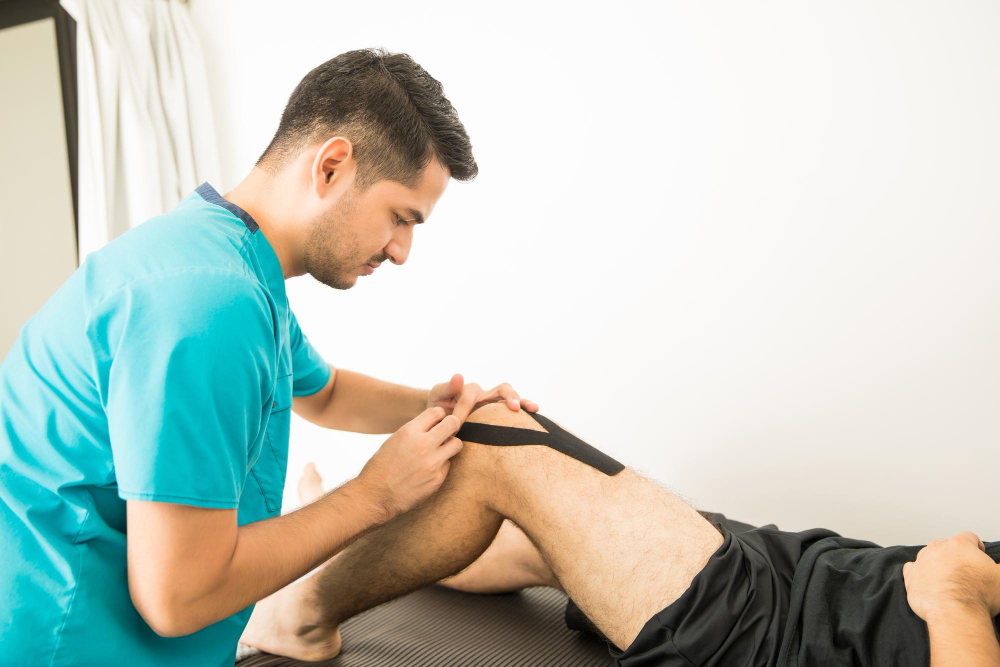ACL Reconstruction Hamstring Tendon
Anterior Cruciate Ligament (ACL) reconstruction with hamstring tendon is a surgical procedure commonly performed to repair a torn or ruptured ACL, a major ligament in the knee. The hamstring tendon, specifically the semitendinosus and gracilis tendons located at the back of the thigh, is often used as a graft to reconstruct the torn ACL. This procedure aims to restore knee stability, improve joint function, and enable individuals to return to their normal activities. Here’s a detailed overview of ACL reconstruction with hamstring tendon, including its indications, procedure, recovery, and potential outcomes:

Indications for ACL Reconstruction:
ACL reconstruction with hamstring tendon graft is typically recommended for individuals with a complete ACL tear and those who:
- Experience knee instability and giving way.
- Participate in sports or activities that require pivoting, cutting, and jumping.
- Have persistent symptoms despite conservative treatment, such as physical therapy.
Procedure:
ACL reconstruction with hamstring tendon involves several key steps:
- Anesthesia: General or regional anesthesia is administered for patient comfort.
- Graft Harvesting: The semitendinosus and gracilis tendons from the back of the thigh are harvested to create the graft.
- Graft Preparation: The harvested tendons are prepared to create a graft that resembles the original ACL.
- Tunnel Creation: Small bone tunnels are drilled in the femur and tibia to secure the graft.
- Graft Fixation: The graft is threaded through the bone tunnels and secured in place using screws, sutures, or other fixation methods.
- Joint Examination: The surgeon checks the knee joint’s stability and range of motion before closing the incisions.
- Closure: The incisions are closed with sutures or staples, and a sterile dressing is applied.
Recovery and Rehabilitation:
After ACL reconstruction surgery:
- Hospital stays vary based on individual factors, such as health and progress.
- A knee brace may be used to protect the graft initially.
- Physical therapy is initiated to promote healing, restore knee strength, and improve range of motion.
- Gradual resumption of weight-bearing and activities is guided by the surgeon and physical therapist.
Advantages of ACL Reconstruction with Hamstring Tendon:
ACL reconstruction with hamstring tendon graft offers several potential advantages:
- Autograft: Using the patient’s own tissue reduces the risk of graft rejection.
- Minimally Invasive: Smaller incisions and reduced tissue trauma compared to open surgery.
- Good Results: Hamstring tendon grafts often provide good stability and function for the reconstructed ACL.
Risks and Complications:
While ACL reconstruction is generally safe, it carries potential risks and complications, including infection, graft failure, blood clots, and nerve or blood vessel injury.
Long-Term Outlook:
The success of ACL reconstruction with hamstring tendon depends on factors such as the patient’s overall health, adherence to postoperative care and rehabilitation, and commitment to protecting the reconstructed knee. Many individuals successfully return to sports and activities with improved knee stability and function following successful ACL reconstruction.
Conclusion:
ACL reconstruction with hamstring tendon graft is a proven surgical technique to restore knee stability and function in individuals with a torn ACL. If you’ve experienced an ACL tear or have symptoms of knee instability, consulting with an orthopedic specialist can help determine whether ACL reconstruction with hamstring tendon is a suitable option to restore knee health, alleviate instability, and enhance your ability to engage in physical activities with confidence.














